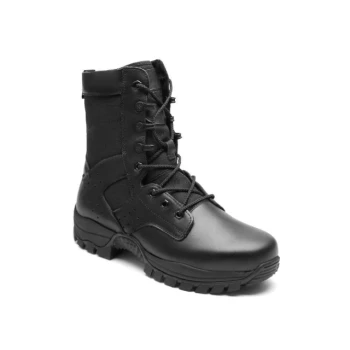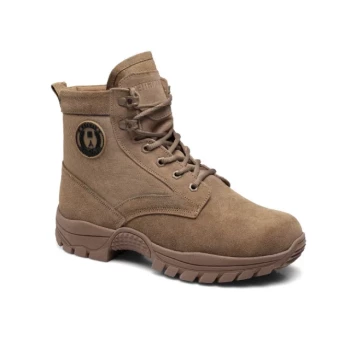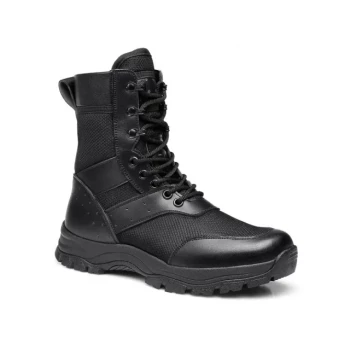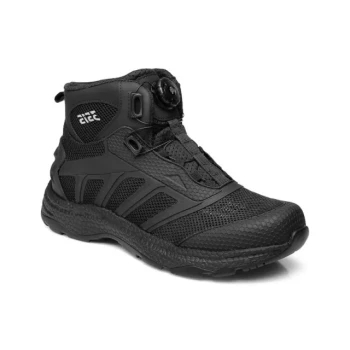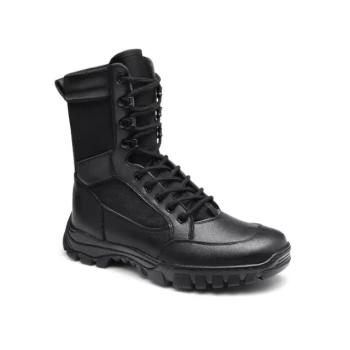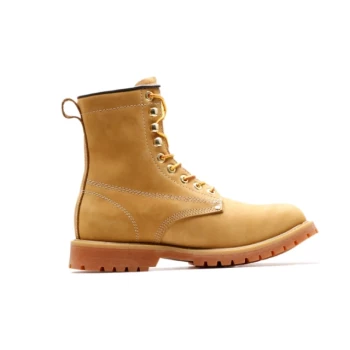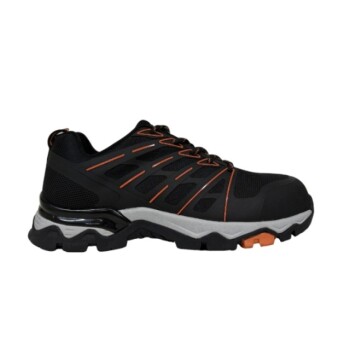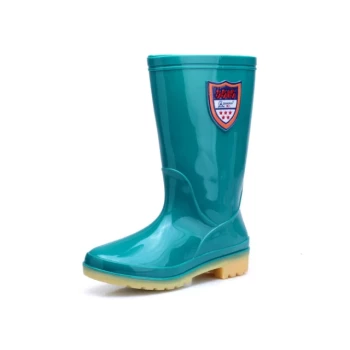In choosing between tactical boots and sneakers, the decision comes down to a fundamental trade-off between protection and mobility. Tactical boots offer superior support, durability, and safety for demanding environments, while sneakers provide lightweight comfort and agility for less strenuous, predictable activities. Your specific daily routine and the surfaces you encounter should be the primary guide for your choice.
The core decision is not about which footwear is "better," but which is the appropriate tool for the job. Misaligning your footwear with your daily activities can lead to discomfort, fatigue, and even injury.
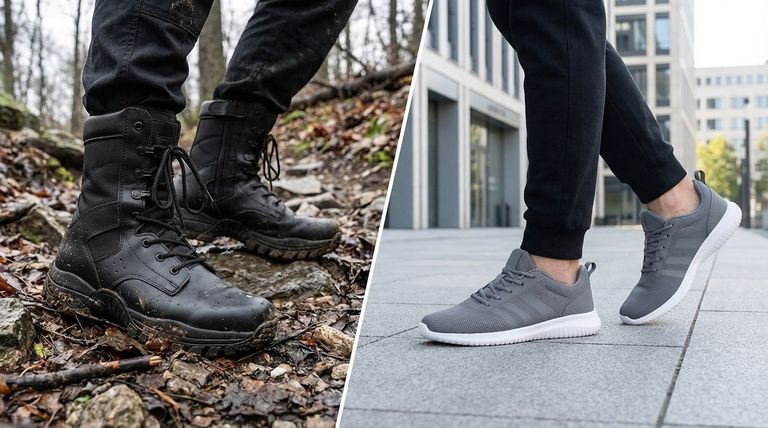
Deconstructing the Key Differences
To make an informed decision, it's essential to understand the specific functional advantages and disadvantages inherent in the design of each footwear type.
Ankle Support & Stability
Tactical boots, particularly high-cut models, are engineered to provide exceptional ankle support. This design helps prevent sprains and twists when navigating uneven terrain or carrying weight.
Sneakers, with their low-cut design, offer minimal ankle support, prioritizing freedom of movement over structural stability.
Weight & Mobility
Sneakers have a clear advantage in weight. Their lighter construction reduces foot fatigue during long periods of walking on flat surfaces and allows for quicker, more agile movements.
Tactical boots are inherently heavier due to their rugged materials and protective features. This added weight can become noticeable and lead to fatigue if your day doesn't require their level of support.
Durability & Materials
Boots are built for longevity in harsh conditions. They typically use robust materials like leather and high-denier nylon for the uppers, paired with durable rubber or polyurethane soles designed to withstand abrasion.
While some sneakers are durable, they are generally designed for performance on predictable surfaces and will wear out much faster than boots when exposed to rough environments.
Protection & Safety
This is a primary function of tactical boots. They offer protection from impact, debris, and weather. Features like reinforced toes (soft, composite, or steel) and slip-resistant outsoles are common and essential for many work or outdoor settings.
Sneakers provide minimal protection. Their soft materials offer little defense against falling objects, and their soles are typically optimized for grip on pavement or gym floors, not wet or rugged ground.
Understanding the Trade-offs
Choosing one type of footwear means accepting the inherent compromises in its design. Being aware of these trade-offs is key to avoiding a poor choice.
The Mobility Penalty of Boots
The same features that make boots protective—stiff materials, high ankle support, and heavy soles—create a mobility penalty. They can feel cumbersome and restrictive during activities that require flexibility and speed, and they are often overkill for a simple day in an office or urban setting.
The Protection Deficit of Sneakers
The comfort and light weight of sneakers come at the cost of protection. Wearing them for tasks like yard work, hiking on rocky trails, or in a workshop environment exposes your feet to a significant risk of injury that a proper boot would prevent.
The Climate & Weather Factor
Tactical boots often feature water-resistant or waterproof membranes, making them far superior in wet or cold conditions. Most standard sneakers offer poor protection from the elements, quickly becoming soaked and uncomfortable in rain or snow.
Making the Right Choice for Your Day
Ultimately, your daily environment dictates the correct footwear. Use your typical activities as the deciding factor.
- If your primary focus is office work, city commuting, or indoor activities: Sneakers are the superior choice for all-day comfort and low-fatigue mobility.
- If your primary focus is physical labor, outdoor adventures, or work on uneven terrain: Tactical boots provide the essential protection, durability, and support you need.
- If your day is a mix of both and you need a hybrid solution: Consider a low-cut tactical shoe or a rugged hiking shoe that blends the ankle freedom of a sneaker with the durable sole of a boot.
Choosing the right footwear is about honestly assessing the demands of your environment and selecting the tool designed to meet them.
Summary Table:
| Feature | Tactical Boots | Sneakers |
|---|---|---|
| Primary Use | Demanding work, outdoor, uneven terrain | Casual wear, office, flat surfaces |
| Ankle Support | High (prevents sprains) | Low (maximizes mobility) |
| Durability | High (robust materials) | Moderate |
| Protection | High (impact, weather, debris) | Low |
| Weight | Heavier | Lighter |
| Best For | Safety and stability on tough ground | Comfort and agility on predictable ground |
Ready to equip your team or brand with the perfect footwear?
As a large-scale manufacturer, 3515 produces a comprehensive range of tactical boots, sneakers, and hybrid footwear for distributors, brand owners, and bulk clients. Our production capabilities ensure durability, comfort, and safety tailored to your specific market needs.
Contact us today to discuss your footwear requirements and discover how we can support your business with high-quality, reliable products.
Visual Guide
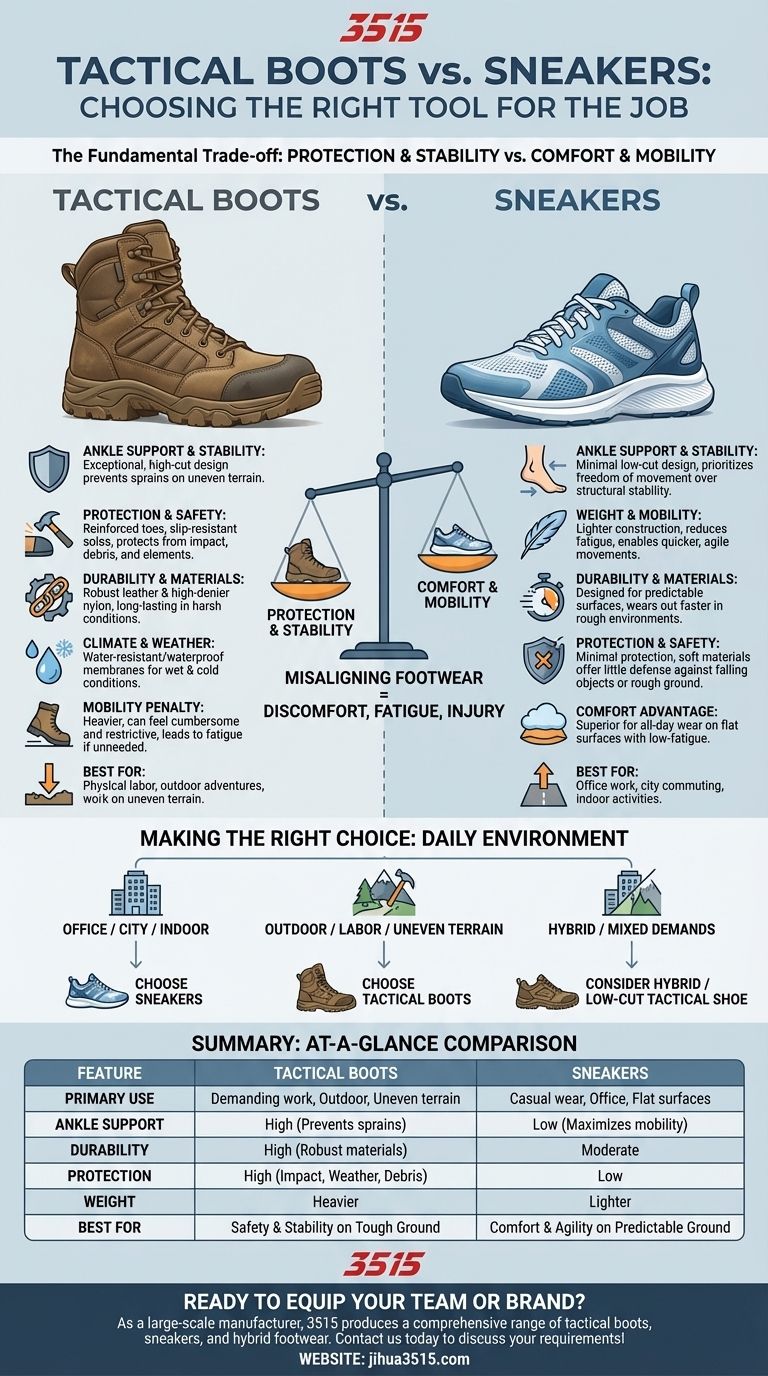
Related Products
- Durable Leather Tactical Boots Wholesale & Custom Manufacturing for Brands
- High-Traction Suede Tactical Boots Wholesale & Custom Manufacturing
- Durable Leather High-Ankle Tactical Boots for Wholesale & Custom Manufacturing
- Durable Mid-Cut Tactical Boots for Wholesale & Private Label
- Wholesale Lightweight Tactical Boots with Dial Closure OEM & Bulk Orders
People Also Ask
- What are the steps to clean full-grain leather military boots? Preserve & Protect Your Gear
- Why is sequential analysis utilized to evaluate tactical boots? Master Dynamic Boot Development and Ergonomic Performance
- Why is the maintenance of tactical boots significant in professional image management? Enhance Your Elite Identity
- Why incorporate footwear geometry into contact models? Enhance Simulation Accuracy for Tactical & Sports Gear
- What features distinguish a tactical boot from regular boots? Uncover the Key Design Differences
